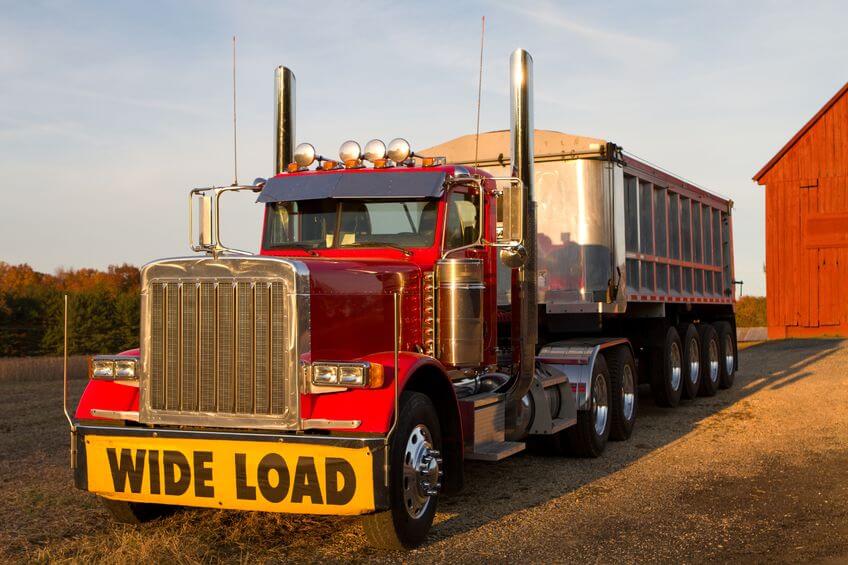For many years, various players in the trucking industry have weighed in (pun intended) on the federal weight and size limits for commercial vehicles. Some groups consider the current federal limits outdated and feel that larger or heavier trucks that were allowed to carry more would be economically beneficial to America. Others feel that increasing truck size or weight could endanger motorists and cost taxpayers greatly.
The Department of Transportation released its final report to Congress this month regarding a study on truck size and weight limits. If this is something you’ve been waiting for, I hope I don’t have to be the first one to tell that you’re going to have to keep waiting because the DOT didn’t give any side of this argument the answer they were looking for.
The spokes of the wheel
Various players in the trucking industry have spoken for or against the current federal size and weight restrictions. There are more than two sides to this battle. There are those that contend that trucks should be allowed to be heavier and longer, those that want trucks to be either heavier or longer, and those people that do not want the truck weight or size to change at all.
The American Trucking Association (ATA)
The ATA, along with many less-than-truckload (LTL) carriers, has supported the use of twin 33 feet long trailer combinations without raising the maximum gross vehicle weight. Since these carriers usually fill their truck before reaching the weight limit, “this modest increase in tandem trailer length would reduce the number of truck trips needed to move an increasing amount of freight while making better use of a dwindling pool of drivers,” the ATA said in a released statement in November 2015.
U.S. Chamber of Commerce
The U.S. Chamber of Commerce also feels strongly about the usage of 33-foot twin trailers. In a letter addressed to the US Senate last November, they stated, “The Chamber strongly supports efforts to improve productivity for the less-than-truckload industry through allowing twin 33-foot trailer configurations, which would boost American businesses burdened with higher costs resulting from inefficient volume restrictions.”
Truckload Carrier’s Association (TCA)
The TCA was happy when the proposed allowance of twin 33-foot trailers was cut from the Fixing America’s Surface Transportation Act highway funding bill. They defended their stance with experience from past changes when the industry changed from 48-foot to 53-foot trailers.
They wrote in their statement, “Although the change from the 48-foot to 53-foot trailers was originally lauded as voluntary, it rapidly evolved into a de facto mandatory change that fleets were expected to make, with none of the financial burden shared by the shipping community.” They also went on to say that it would worsen the driver shortage because drivers lack experience with tandem trailers, and the limited truck parking that is available would be useless due to the added length.
Agricultural and Food Producers
Those in the agriculture or food industry are in support of heavier trucks. They complain that trucks are often leaving their farms partially empty because of the weight regulations, even though there is still space in the truck. A letter sent to the House of Representatives was signed by 77 farm and food organizations, and this group of people would like to see the weight limit raised to 91,000 lbs. for six-axle trucks.
Coalition Against Bigger Trucks (CABT)
The CABT is against bigger or heavier trucks. In fact, if you visit the CABT website, you’ll see their message very clear: “They endanger motorists, they wreck bridges and roads, they cost taxpayers.” This group says bigger trucks will lead to stability problems, higher crash risk, bridge damage and bigger subsidies.
Results of the DOT report
As you probably already know, this month, the Department of Transportation released a report on a study they conducted regarding the truck size and weight limits. One of the very first sentences of the report states that the purpose of this study was to “inform Congress, not to build a better truck or advocate for major new programs or policies.” The DOT stands by that statement and believes that to be able to advocate for major new policies or programs, they need more information, or in other words, another study.
The DOT study focused on 5 technical areas:
- Highway safety and truck crashes, including vehicle performance and inspection and violation patterns
- Shifts in goods movement among truck types and between modes
- Pavement service life
- Highway bridge performance
- Truck size and weight enforcement programs
The DOT reported that there were many data gaps and insufficiencies in each area of the study. Many of the crash databases do not have enough data elements to be able to fully analyze the situation at hand. Many of the state crash database systems do not have operating truck weight at the time crash, nor specifics regarding the truck configuration.
Amongst many other data gaps, the DOT maintains that further testing would need to be done to determine what the impact of heavier trucks would be on longitudinal barriers. These barriers are currently tested based on crash tests where the max gross vehicle weight is 80,000 lbs. Before policies change, the impact of heavier vehicles on those barriers would need to be evaluated.
The DOT ended their report saying that, “in many ways, this study produced more questions than it sought to answer.” They feel that another study, even with more time or money, would not produce dependable results. To be able to fully evaluate the truck size and weight regulations, the DOT recommends a program be designed to “establish data sources and models to advance the state of the practice. With not enough data being collected for analysis, “the Department stresses that no changes in the relevant federal truck size and weight laws and regulations should be made until these limitations are overcome.”




April 25, 2016
Very interesting article. Thank you for the information.